The South African Knowledge Access Network
SAKAN Concept and Strategy: ICT in Sustainable DevelopmentSince the emergence of our species some 300,000 years ago as a cognitive, highly creative species, humanity has survived, thrived and prospered by sharing information and knowledge freely for the common good. Over the past two millennia, ideas, information, knowledge and innovation have become commercialized, a price has been placed on them as “Intellectual Property”. This change has spawned deep inequalities in all the means of survival and growth, and South Africa is the global leader using all measures of inequality within and between its citizens, and between South Africa and the rest of the world. This SAKAN initiative is a small step towards rectifying this very human challenge and flaw, by attempting to connect the unconnected masses in South Africa to the global information society. The tools chosen are the Information and Communication Technologies (ICT), the most effective communication tool available to the human species today.
 The SAKAN proposal is anchored in the Global Sustainable Development Goals (SDG), "a universal call to action to end poverty, protect the planet and ensure that all people enjoy peace and prosperity". SAKAN seeks to provide ICT access, user skills, technological appropriation, and all the enabling benefits of ICT to South Africa's economically marginalized and information/knowledge excluded 30+ million citizens, so that they benefit fully from the implementation of the SDGs. Affordability is one of the main barriers to the access and use of ICT by South Africa's poor, the prevailing exclusionary pricing of this vital human development tool (ICT) is discussed in section 4 on page 8 of the linked document ICT4SDG1. Please click the adjoining SDG image for more details about the relationship between ICT and each SDG.
The SAKAN proposal is anchored in the Global Sustainable Development Goals (SDG), "a universal call to action to end poverty, protect the planet and ensure that all people enjoy peace and prosperity". SAKAN seeks to provide ICT access, user skills, technological appropriation, and all the enabling benefits of ICT to South Africa's economically marginalized and information/knowledge excluded 30+ million citizens, so that they benefit fully from the implementation of the SDGs. Affordability is one of the main barriers to the access and use of ICT by South Africa's poor, the prevailing exclusionary pricing of this vital human development tool (ICT) is discussed in section 4 on page 8 of the linked document ICT4SDG1. Please click the adjoining SDG image for more details about the relationship between ICT and each SDG.The SAKAN strategy is more than just connecting the poor to the information society and the knowledge within it - it is also a potent tool for delivery of development assistance to the poor. The persons tasked with assisting the poor to overcome the multidimensional components of poverty will have improved both-way access to the targets of their development in all seventeen SDGs and more. The SAKAN strategy is highly scalable, capable of bridging the vast communication divides that separate the victims of poverty and the persons and institutions tasked with helping them. The technologies used are cost-effective and relatively simple to set up and use. All that is required is the national will by all stakeholders to apply these technologies at scale so that the erosion of South Africa's SDG challenges and threats can be hastened.
The SAKAN model draws liberally from the experiences of South Africa's peers, specifically Brazil and its LAN House public Internet access model, China which has used the Internet Café model as one of the tools that steered the nation to global dominance in the number of Internet users, and India, which used the Internet Café model as one of the tools that launched the world-renowned "Silicon Valley of India" in Bengaluru. The slider below provides a brief glimpse of how some of South Africa's peers used the Cyber Café model to extend technological appropriation and digital literacy to their youngest citizens, thus preparing them for the uncertain future of the Fourth Industrial Revolution and its successors.
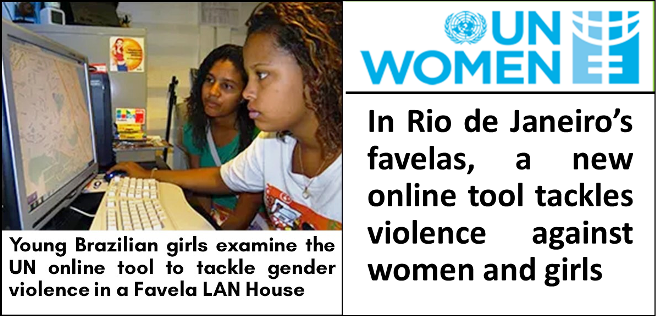
The Brazilian LAN House is a standard Internet Café located in the poorest favelas and rural communities of Brazil, owned and operated by small and micro businesses from the community, offering a wide range of ICT services including broadband fixed and wireless access at prices that local residents can afford.
What differentiates the Brazilian LAN House model from other Internet Cafés is that the concept was launched through direct assistance by the Government of Brazil as part of its national "Digital Inclusion" strategy, the key components of which are:
- The Brazilian Government recognized that the digital inclusion challenge for the poor extended far beyond mere connectivity - affordable user equipment and user skills were needed in addition to access to the Internet;
- The Government then embarked on a major programme to seek donations of used and new hardware and software from local businesses and willing institutions, setting up warehouses, refurbishing centres for used hardware, distribution systems, and basic user and equipment repair training for unemployed citizens from the communities;
- The "graduates" from the above training were then assisted to set up Internet Cafés in their communities using the refurbished and donated new hardware, with further assistance where necessary to develop viable business plans, and to identify and secure low cost (mostly publicly owned) premises for their small businesses. The electronic hardware and other support materials were not "given" to the new SMME service providers, but were provided as investment loans, with 5-year payback arrangements made with local banks;
- The Brazilian Government, noting the shortcomings of the current "Telecentre" strategy, welcomed the flexibility of the LAN Houses that encouraged children and youth to use the facilities, acquire vital digital skills, and improve their critical thinking capacities in ways that they enjoyed; on-line games and peer-driven learning. Government's support of "The LAN House Phenomenon" as it is referred to by sociologists and other human behavioral scientists, raised the level of Internet usage by the poor to more than 70%, fueled the nation's rapid reduction of inequality and absolute poverty, and spawned a nation of impressive SMME entrepreneurs in all sectors of the modern free market economy. Brazil has benefited greatly from the LAN House phenomenon;
- The Brazilian LAN Houses are now in decline, down 50% from a height of 110,000 in circa 2014. This decline has been most welcome in Brazil - the LAN Houses have created a significant demand for broadband connectivity via fixed and mobile broadband access, and the availability and affordability of Wi-Fi connected smart-phones, tablets, laptop and desk-top computers in all the favelas and most remote rural villages. Brazil's national ICT strategy has resulted in affordable computer terminals and broadband access to the extent that a growing number of economically challenged favela and remote rural dwellers can afford individual access to broadband at home. Household fixed broadband penetration in 2017 reached 36%. The LAN House model is changing; high value and high financial turnover gaming centres are thriving in both the wealthy and poorer residential areas of Brazil. The Brazilian LAN House phenomenon has served its country well.
- Can South Africa emulate the successes of its BRICS partner Brazil, and begin to reverse the debilitating threats of inequality, poverty and unemployment through similar strategies? Such emulation of Brazil's success is relatively simple and cost-effective, all it needs is the political will to implement the model on a national scale. South Africa's partnership in the BRICS community of nations offers excellent opportunities for the transfer of knowledge, experience and skills to build a national network of Cyber Cafés or LAN Houses in South Africa's economically deprived rural and urban enclaves.
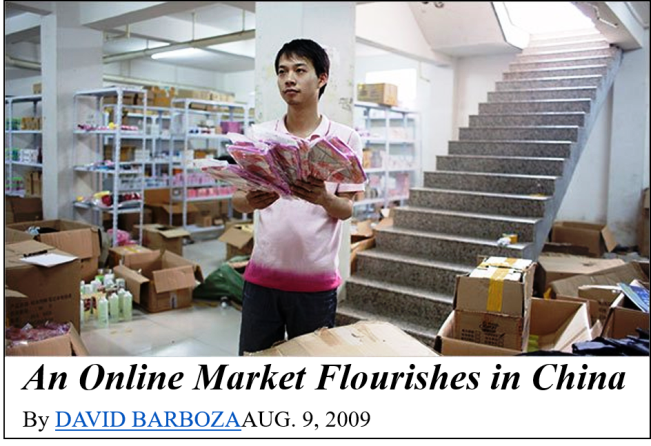
23-year-old Yang Fugan, college student from a poor family, uses e-commerce to help his family and pay his tuition. He buys goods from the national e-commerce site Taobao.com, first accessed it through a Cyber Café at $10 per month. In 2008, he employed 14 others, and generated US$75,000, 12 times the GNI per capita. Numerous like-minded youngsters are doing the same - viable informal SMME businesses operated from their university dormitories, providing useful income to help meet university fees, and to impart invaluable business skills.
"Across the Great Wall we can reach every corner of the world", read the header of the first email sent from China back in 1987: From snail mail to 4G, China celebrates 20 years of Internet connectivity: CNN April 24, 2014. China's first connection to the Global information Society was commissioned in April 1994, launching the country's ascent to global dominance in the 21st century Fourth Industrial Revolution Technologies. One of the key growth drivers was the introduction of the Internet Café model. Private sector entrepreneurs took advantage of the high costs of user terminals and Internet access by creating public spaces in which even the poorest Chinese nationals could access the World Wide Web for entertainment and business.
Privately owned and operated Internet Cafés grew to approximately 146,000 "legal" businesses with 20 million daily users by 2015, while estimates suggest more than double that number were unregistered or "illegal" ICT access facilities. The following brief notes provide an indication of the immense contribution of Internet Cafés to China's economic and technological development.
- In circa 1994, only about 2000 computers in China had access to the Internet through dial-up and extremely costly very slow speed connections. Then came the Internet Cafés in 1996, fueling an exponential rise in Internet usage by ordinary Chinese citizens, a massive increase in new kinds of jobs, and a massive increase in Internet Contribution to GDP. The demand for Internet Access drove the country to global dominance by 2015 with 277 million fixed broadband subscribers, and more than 700 million mobile broadband subscribers by 2018. China's fixed broadband penetration level was 20% in 2015, compared to South Africa's 2.6% in the same year (source: ITU);
- In 2011, nearly 70% of the 20 million daily Internet Café users were middle income citizens earning between US$140 and US$700 per month (2018 exchange rates). 23% users were from population groups with zero income, and just 1.5% were high income users earning more than US$1,400 per month. Source:Statista. The Internet Café model served the nation well, catapulting the country to near global leadership in all the technological components of the 4IR;
- E-Commerce in China: The growth of Internet Cafés in China spawned a massive growth and development of e-commerce, from humble beginnings in Internet Cafés as per the example of Yang Fugan above, to global leadership with 40% of the world's e-commerce transactions by 2018, expected to soar to more than 60% by 2020 - WEF 2018 discussion on e=commerce. The success of Jack Ma's Alibaba Group is well known, named the largest on-line business-to-business trading group for small businesses in 2014. China's e-commerce successes, which include Tencent Holdings with significant shares in South Africa's Naspers conglomerate, have become dominant global businesses;
- China's Internet Café ecosystem, after having contributed to the nation's technological growth, is now migrating to the very high value e-sport industry, valued at about US$140 billion in 2018.
The following section provides a brief summary of how South Africa can build a highly scalable Internet Café ecosystem to address the Sustainable Development needs of the nation's poor.
- Access to broadband: The proposed SA-LAN comprises thousands of Internet Cafés set up in impoverished rural and urban communities to enable affordable access to all broadband services by all residents of those communities;
- Job creation: Basic training provided to selected community members to own and operate the SMME SA-LAN businesses, and to provide a progressively increasing range of technical support to their communities as they acquire such skills through on line self and peer-driven learning: Extract from Brazilian David Nemer's highly relevant article "Digital Favelas: What Cities of Tomorrow Can Learn from the Slums of Today" "The LAN houses have, in their centralization of technological availability, become a source of help and technological knowledge for the favela residents. The increasing affordability of technology has led to an increasing number of first-time users in the favela. The LAN houses provide a base from which residents can acquire the knowledge and help to maintain their purchases, as described by Alex, a LAN house owner". Alex and many others like him taught themselves the basics of IT servicing and repair through on-line Youtube video lessons accessed from their own LAN-Houses;
- Focus on Children: The SA-LANs must be as child-friendly as possible within the resource capacities of the community. Children aged eight and under develop vital critical thinking skills through on-line child-friendly learning games, e.g. World Bank 2016: Evoke – Developing Skills in Youth to Solve the World’s Most Complex Problems ; and Digital Media for ECD in Finland: "Fun and games: Digital media in Finland's preschools", 1st April 2016. South Africa's children from wealthy communities can/do access these learning games in the schools and preschools they attend or at home: South Africa's +65% child population living below the national poverty lines do not have such access. The SA-LANS can provide the access required to bridge the very wide learning and knowledge inequalities between the nation's rich and poor children. Adults will of course benefit greatly from the SA-LANs as well, but at a much slower pace: Adults from poor communities are generally far to busy searching for the means of survival, leaving very little time to acquire the digital literacy required to maximize the benefits of access to the information society.
- Emphasis on Women: It is a well-known fact that providing development assistance to women is the most effective and sustainable path to development and reduction of poverty. In the case of the SA-LANs, a further major advantage of empowering women to own and operate SA-LANs arises from the fact that women are better equipped to nurture and manage young children's use of the SA-LANs for learning with play. In addition, women-headed households tend to be much more stable, especially in rural communities; women are less likely to migrate or move away from home provided they have the livelihood incomes, which can be provided by the SMME SA-LAN businesses;
- Access to Government Services: SA-LANS located in economically marginalized communities provide an elegant communications channel to the South Africans who need government services most. e-Government services accessed directly by whole communities in their own localities; On-line interactions between poor communities and national institutions, e.g. school and university applications and registrations (recent complaints that many university applicants experienced difficulties in submitting on-line applications); On-line surveys by e.g. Statistics South Africa to reduce the very high costs of household surveys; Vital opportunities for ethnographic research in economically marginalized communities, e.g. Rethinking Digital Inequalities: The Experience of the Marginalized in Community Technology Centres in Brazil's favelas: Dr David Nemer, University of Kentucky; Safety and security services to whole unconnected communities using the Internet of Things (IoT) through SA-LANS where possible or necessary, thus providing early warning services and vital communication channels between relevant service providers and whole communities; Many more possibilities;
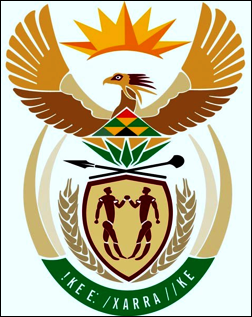 The South African Government
The South African Government
- All branches of Government are impacted by, and have direct impact on all South Africa's challenges enshrined in the seventeen SDGs. The ICT sector provides the enabling environment for coordination of these SDGs:
- The Department of Communications, Telecommunications and Postal Services provides the policy support;
- ICASA, the State ICT Regulator, provides the regulatory support for those policies and for SAKAN;
- The ICT-related state owned companies can provide direct assistance for the realization of SAKAN, and for the achievement of all South Africa's SDGs.
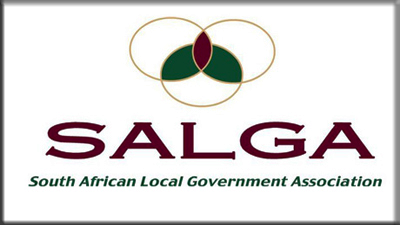 The Local Government and Municipal Sector
The Local Government and Municipal Sector
- The local government and municipal sector, represented by SALGA, is responsible for the sustainable growth and wellbeing of the citizens they serve: Massive poverty alleviation budgets;
- Effective communications between the municipal authorities and citizens are vital for the achievement of all municipal goals and their implementation plans;
- SAKAN provides those vital communications channels, and must therefore be owned and supported by all municipalities;
- All South African municipalities strive for the creation of "Smart Cities", but Smart Cities cannot exist without Smart Citizens; SAKAN serves both.
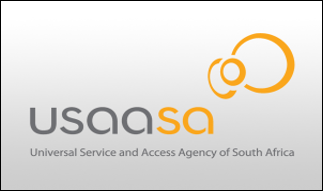 Universal Access and Service Obligations
Universal Access and Service Obligations
- The Universal Service and Access Agency of South Africa (USAASA) was set up for poverty alleviation through ICT inclusion: see Section 5.4 of National Integrated ICT Policy.
- The ICT Policy proposes replacing USAASA with a Digital Development Fund (Digital-DF). This new fund can/must extend its funding beyond contributions by the ICT industry alone: CSR budgets in all sectors; Collaboration with NRF its partners. Close collaboration with all ICT4SDG initiatives is mandatory;
- The SAKAN concept aligns well with the Digital-DF vision and mandate, and must be adopted as one of its many strategies.
 The role of the National ICT Industry
The role of the National ICT Industry
- The South African ICT Industry, a continental business/technology leader that has failed to meet the ICT needs of 55% of the South African population;
- SAKAN can change this, solutions that meet the aspirations of both the public and private ICT sectors; diffusing the often fractious relationships between between them;
- SAKAN Solution: a highly scalable public broadband access facility for the poor that offers back-haul connectivity opportunities to the ICT industry at current price levels: A win-win "Smart partnership" scenario for Government, Industry and the poor;
 Academia, Education, R&D
Academia, Education, R&D
- Academia: A massive shift towards applied R&D for each SDG;
- Education: Complimentary additions to Basic, Higher, and Vocational Training to meet demands of the 4IR and SDGs;
- Expansion of R&D and the numerous Innovation Hubs to cover the Base of the Development Pyramid;
- Focus on ECD in the technology arena for future 4IR readiness;
- SAKAN possibilities: access to information and knowledge; job creation, technological appropriation and digital skills; a platform for applied research for all SDGs via ICT4SDG.
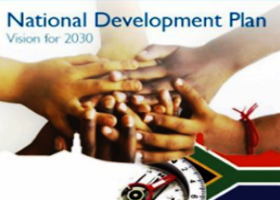 Civil Society:
A community of citizens linked by common interests and collective activity to achieve common good
Civil Society:
A community of citizens linked by common interests and collective activity to achieve common good
- They represent every aspect of society everywhere, and all its component institutions;
- Mostly shared altruistic agendas;
- They are critical components of the emerging global multistakeholder movement;
- They address both global and local/national challenges, those enshrined in all 17 SDGs;
- Through strongly shared aspirations and visions, the global and national Multistakeholder Community are actual or potential members of the SAKAN family.
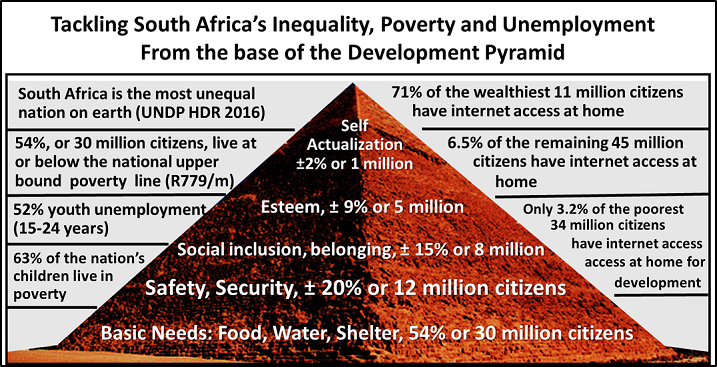 The SAKAN concept and strategy comprises mass application of SA-LANS operated by local community SMMES that provide massively shared affordable broadband services to impoverished rural and urban communities. Full details of how this concept can be implemented and rendered sustainable are provided in the detailed description - please click the image above to download this detailed description.
The SAKAN concept and strategy comprises mass application of SA-LANS operated by local community SMMES that provide massively shared affordable broadband services to impoverished rural and urban communities. Full details of how this concept can be implemented and rendered sustainable are provided in the detailed description - please click the image above to download this detailed description.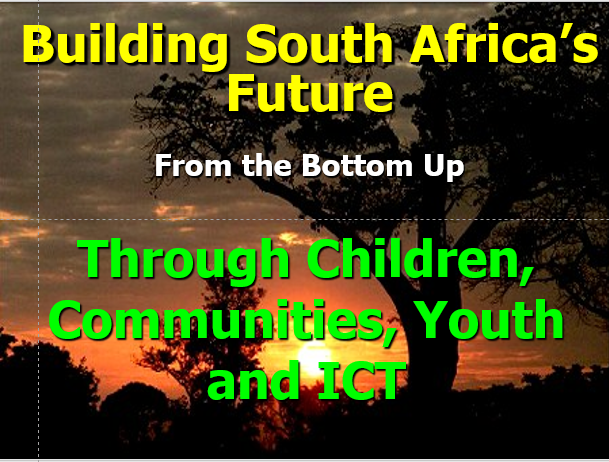
This survey of how South Africa’s peer developing nations have used variations of the SA-LAN concept to: (a) provide affordable access to broadband through massively shared public facilities; (b) promote technological appropriation and digital skills development through online entertainment, peer-driven learning especially in the arena of early childhood development (ECD) of the digital kind; (c) massive job creation as SA-LAN operators, SMME broadband backhaul service providers, and e-commerce users external to the ICT industry. Please click the image and view the full presentation.









